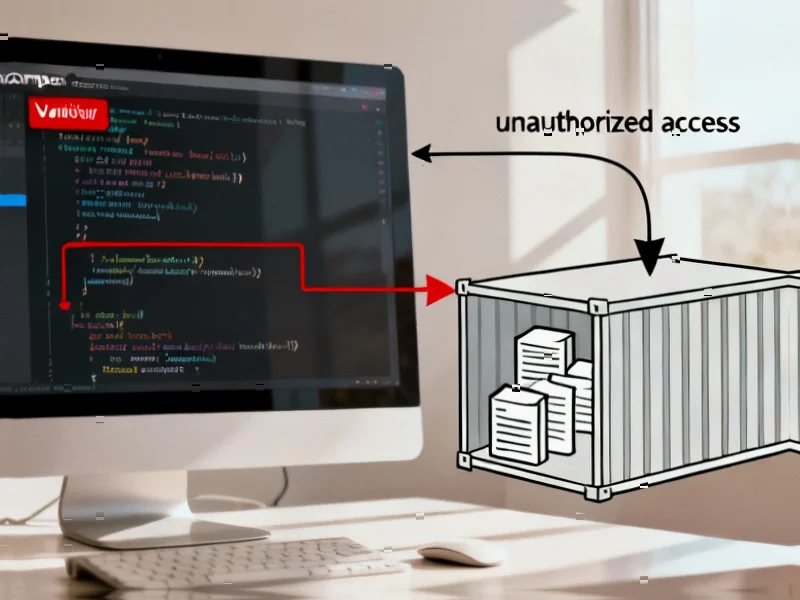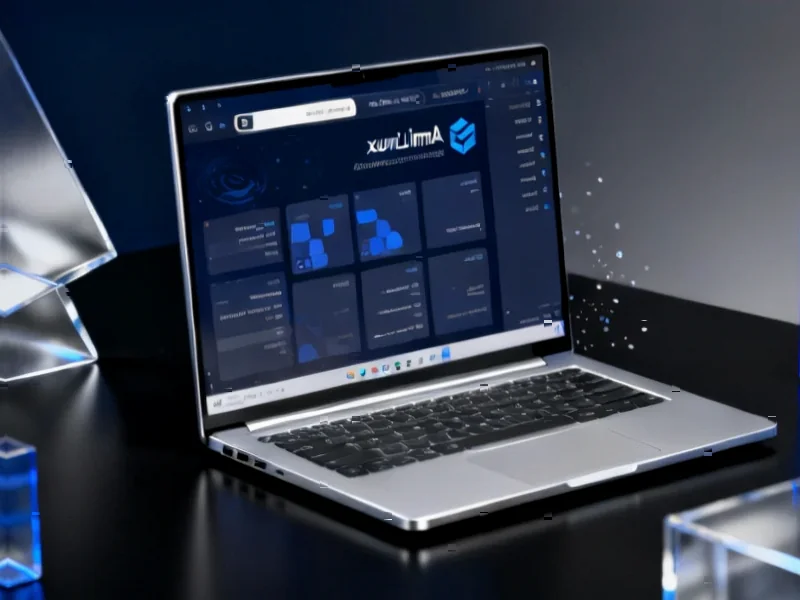According to TheRegister.com, Docker Compose users face a critical security threat with CVE-2025-62725, a path traversal vulnerability rated 8.9 severity that allows attackers to escape the cache directory and write arbitrary files anywhere the Compose process has permission. Discovered by Imperva researcher Ron Masas in early October, the flaw exploits Docker Compose’s OCI artifact support by manipulating layer annotations to bypass security boundaries. Simultaneously, Docker addressed EUVD-2025-36191, a Windows Desktop Installer DLL hijacking vulnerability rated 8.8 severity that searches for DLLs in the user’s Downloads folder before system directories. Both vulnerabilities have been patched in Docker Compose v2.40.2 and Docker Desktop 4.49.0 respectively, marking the second consecutive month Docker has addressed high-severity flaws. These developments highlight ongoing container security challenges that demand immediate attention.
Table of Contents
- The Fragile Nature of Container Security Boundaries
- Understanding the Path Traversal Attack Vector
- Windows DLL Hijacking: A Persistent Threat Resurfaces
- Real-World Impact on Development Workflows
- Broader Security Implications and Response Strategy
- The Road Ahead for Container Security
- Related Articles You May Find Interesting
The Fragile Nature of Container Security Boundaries
What makes CVE-2025-62725 particularly concerning is how it undermines the fundamental security promise of containerization. Docker containers are designed to provide process isolation, but this vulnerability demonstrates how seemingly minor implementation flaws can completely bypass those protections. The issue stems from Docker Compose’s handling of OCI (Open Container Initiative) artifacts, which represent a significant evolution in how container configurations are packaged and distributed. While OCI standards aim to improve interoperability, this incident reveals how new features can introduce unexpected attack vectors when security validation isn’t comprehensive enough.
Understanding the Path Traversal Attack Vector
The vulnerability’s mechanics are both simple and devastatingly effective. When Docker Compose processes OCI layers, it relies on layer annotations to determine file placement without proper path validation. This creates a classic directory traversal scenario where an attacker can craft malicious annotations containing sequences like “../../” to escape the intended cache directory. The absence of path normalization or canonicalization means Compose will literally join the cache path with the malicious annotation, allowing writes to any location where the process has permissions. This isn’t just about file creation—it’s about achieving persistence, modifying system configurations, or planting backdoors that survive container termination.
Windows DLL Hijacking: A Persistent Threat Resurfaces
The Windows Desktop installer vulnerability represents a different but equally dangerous class of security failure. The insecure DLL search order—checking the user’s Downloads folder before system directories—is a well-documented anti-pattern that attackers have exploited for decades. What makes this particularly troubling in Docker’s context is that the installer typically runs with elevated privileges, meaning successful exploitation could lead to full system compromise. This vulnerability affects the Windows shell integration components, potentially allowing attackers to intercept installation processes and inject malicious code that executes with system-level permissions.
Real-World Impact on Development Workflows
These vulnerabilities strike at the heart of modern development practices. Docker Compose powers everything from local development environments to enterprise CI/CD pipelines, meaning a compromised artifact could propagate through entire software delivery chains. The attack scenario is particularly insidious because it doesn’t require compromising the container registry itself—attackers simply need to convince users to reference a malicious remote artifact. Given how commonly developers share Compose configurations through internal documentation, team chats, and public repositories, the social engineering barrier is remarkably low for such a high-impact vulnerability.
Broader Security Implications and Response Strategy
The consecutive nature of these high-severity findings—following August’s critical flaw and last month’s high-severity issues—suggests Docker may be struggling with security debt as its platform evolves. The OWASP Docker Security Cheat Sheet rightly emphasizes keeping systems updated, but organizations need more proactive strategies. Security teams should implement artifact scanning for OCI compositions, enforce strict access controls on Docker daemons, and consider running Compose with minimal necessary privileges. The fact that both vulnerabilities received ratings above 8.8 on their respective scales (CVE-2025-62725 and EUVD-2025-36191) underscores their critical nature and the urgent need for comprehensive container security programs.
The Road Ahead for Container Security
Looking forward, these incidents will likely accelerate several security trends. Expect increased scrutiny of OCI artifact security, more robust path validation in container tooling, and potentially the emergence of specialized security tools for Compose configurations. The research from Imperva’s detailed analysis demonstrates how security researchers are increasingly focusing on the orchestration layer rather than just container runtime security. As organizations continue adopting container technologies at scale, the security community must evolve beyond basic container hardening to address the complex interaction between orchestration tools, host systems, and development workflows.



